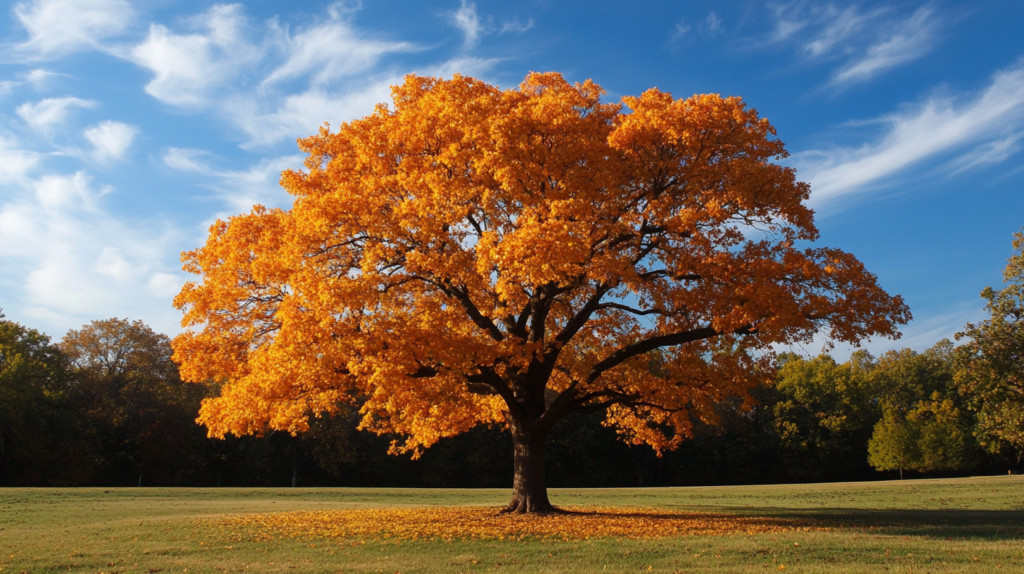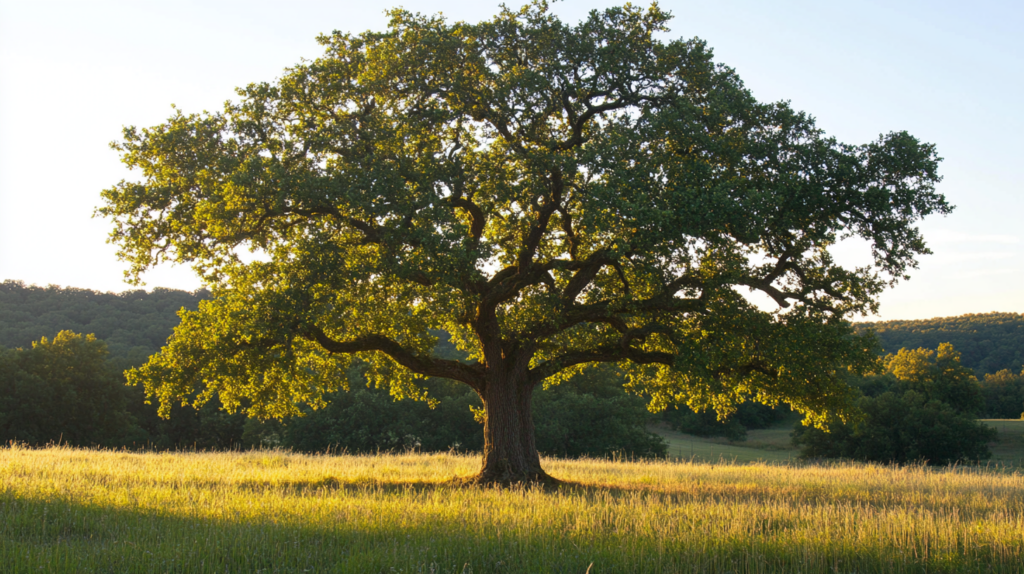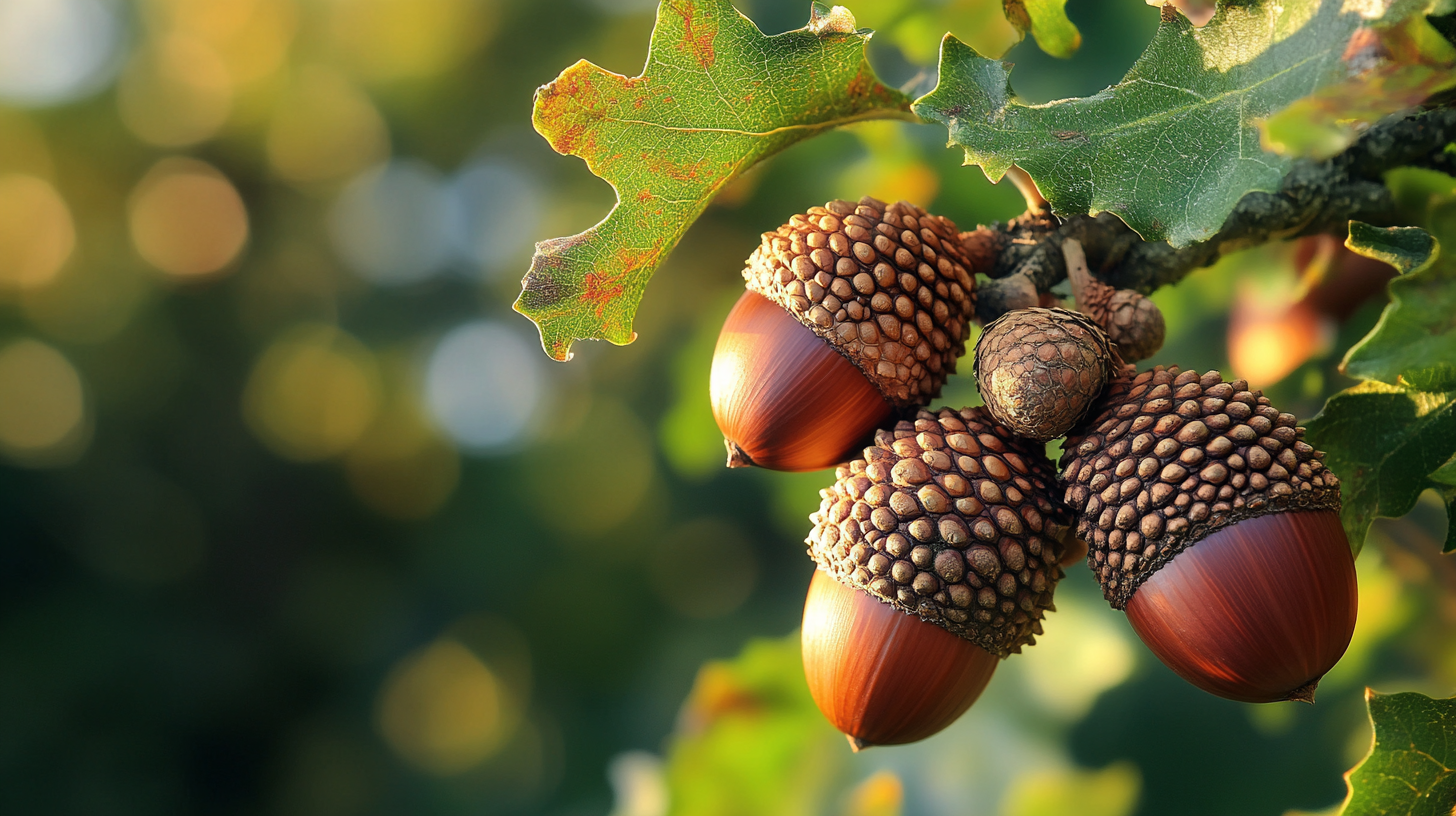Table of Contents
Oak trees, with their majestic presence and sprawling canopies, have long been a symbol of strength and endurance. But beneath their impressive exterior lies a question that’s puzzled many: are oak trees poisonous to humans? Let’s dive into this fascinating topic and explore the potential risks and benefits of these iconic trees.
Understanding Oak Trees: A Quick Primer
Before we delve into the toxicity question, let’s get to know our leafy friends a bit better. Oak trees belong to the genus Quercus, which includes over 500 species worldwide. They’re known for their distinctive lobed leaves and acorn fruits. Here in the United States, we’re home to about 90 native oak species, each with its own unique characteristics.
Some common oak varieties include:
- White Oak (Quercus alba)
- Red Oak (Quercus rubra)
- Live Oak (Quercus virginiana)
- Pin Oak (Quercus palustris)
These hardy trees can live for centuries, with some specimens reaching the ripe old age of 800 years or more. They’re not just long-lived; they’re also incredibly versatile, providing food and shelter for wildlife, wood for furniture and construction, and even ingredients for traditional medicines.
The Poisonous Parts of Oak Trees: What You Need to Know
Now, let’s address the elephant in the room: are oak trees poisonous to humans? The short answer is yes, but it’s not quite that simple. Different parts of the oak tree contain varying levels of toxicity, and the risk to humans is generally low unless large quantities are consumed.
Acorns: Friend or Foe?
Acorns, the nuts produced by oak trees, are perhaps the most well-known potentially toxic part. They contain tannins, which can be harmful if consumed in large amounts. However, it’s important to note that acorns have been a food source for humans for thousands of years. The key is proper preparation.
Tannin removal process:
- Crack and shell the acorns
- Grind the nut meat
- Soak or boil in water repeatedly until the water runs clear
- Dry and use as flour or meal
Oak Leaves: Are They Safe to Touch?
While oak leaves are generally safe to touch, they can be toxic if ingested, especially when young. The spring growth of oak leaves and buds is particularly potent. However, the risk to humans from casual contact is minimal.
Bark and Sap: Potential Risks
Oak bark and sap contain similar compounds to the leaves and acorns. While they’re less likely to be accidentally ingested, they can cause skin irritation in sensitive individuals.
Oak Tree Toxicity: Separating Fact from Fiction
Let’s bust some myths and clarify some facts about oak tree toxicity:
| Myth | Fact |
|---|---|
| All parts of oak trees are deadly poisonous | While oak trees contain toxic compounds, they’re rarely fatal to humans |
| You can’t eat acorns | Acorns are edible when properly prepared |
| Oak leaves are safe to eat | Young oak leaves can be toxic and should not be consumed |
| Oak trees pose no risk to humans | While generally safe, oak trees can cause health issues if mishandled |
Symptoms of Oak Tree Poisoning in Humans
While severe oak poisoning in humans is rare, it’s important to recognize the potential symptoms:
- Digestive issues: nausea, vomiting, abdominal pain
- Kidney problems: changes in urine output or color
- Liver dysfunction: jaundice, fatigue
- Allergic reactions: skin rashes, itching, difficulty breathing (in rare cases)
If you suspect oak poisoning, it’s crucial to seek medical attention promptly.
Who’s at Risk? Vulnerable Groups and Oak Tree Toxicity
While oak trees pose minimal risk to most adults, certain groups should be more cautious:
- Children: Their natural curiosity and tendency to put things in their mouths make them more susceptible to accidental ingestion of acorns or leaves.
- Pets and livestock: Animals, especially cattle and sheep, are at higher risk of oak toxicity. In fact, oak poisoning can be a significant issue for livestock owners.
- People with allergies or sensitivities: Some individuals may have allergic reactions to oak pollen or develop contact dermatitis from oak sap.

Oak Trees in Your Yard: Safety Tips and Precautions
If you have oak trees on your property, here are some tips to minimize risks:
- Educate children about not eating acorns or leaves
- Keep livestock away from oak-heavy areas during spring and fall
- Wear gloves when handling oak leaves or bark if you have sensitive skin
- Clean up fallen acorns regularly to prevent accidental ingestion by pets or wildlife
The Benefits of Oak Trees: Why They’re Worth Having Around
Despite the potential risks, oak trees offer numerous benefits:
- Ecological importance: Oaks support a wide variety of wildlife, from insects to mammals
- Air quality: Like all trees, oaks help purify the air and produce oxygen
- Shade and energy savings: Their large canopies can help reduce cooling costs in summer
- Aesthetic value: Oak trees add beauty and character to landscapes
Oak Trees in Food and Medicine: Safe Uses and Potential Risks
Historically, oak trees have played a significant role in both cuisine and traditional medicine. Here are some interesting uses:
Food uses:
- Acorn flour for baking
- Acorn coffee (a caffeine-free alternative)
- Oak leaf wine
Medicinal uses:
- Astringent properties for treating skin conditions
- Traditional remedies for digestive issues
- Potential anti-inflammatory effects
However, it’s crucial to note that these uses should only be explored under proper guidance and after thorough research.

Conclusion: Living Safely with Oak Trees
In answering the question “Are oak trees poisonous to humans?”, we’ve discovered that while oak trees do contain toxic compounds, they generally pose minimal risk to humans when treated with respect and caution. The key is education and proper handling.
Oak trees have been our companions for millennia, providing food, shelter, and resources. By understanding their potential risks and benefits, we can continue to coexist with these magnificent trees safely and appreciatively.
Remember, if you have any concerns about oak tree toxicity or experience symptoms after contact with oak trees, always consult with a healthcare professional. With the right knowledge and precautions, we can enjoy the beauty and benefits of oak trees while minimizing any potential risks.




